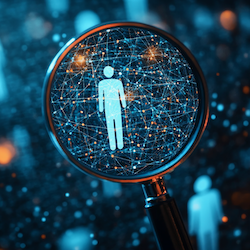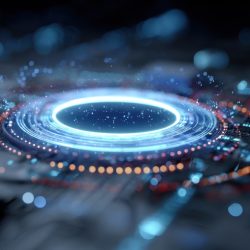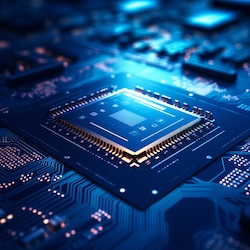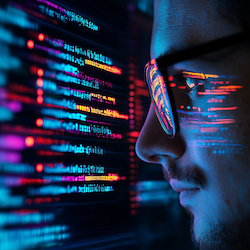Trends
In-depth analysis of the latest tech trends, with highlights of the top research from the world's standard-bearer for computing professionals.
Recent Articles
By IEEE Computer Society Team
Introduction
Retrieval-Augmented Generation (RAG) has emerged as a practical design pattern in generative AI, enabling language models to ground their responses in external, often proprietary, knowledge sources. By separating the retrieval mechanism from the language model itself, RAG provides a scalable alternative to static training on mas...
By Eric Arnold
Quantum computing is often discussed in terms of its potential to revolutionize scientific discovery and to challenge cryptographic paradigms [1], but it could also change our relationship with money. By using quantum states, quantum currency could solve the double-spending problem and address throughput issues associated with distributed ledgers...
By Andy Johnson
Introduction
Learning Metadata Terms (LMT) is a standard that connects metadata terms in practice with the purpose of solving many use cases common to e-learning. While there are other metadata standards, they have been inadequate for keeping up with machine-readable data requirements, which modern AI needs to achieve significance. While dat...
By Laxman Sayaji Khandagale
The use of artificial intelligence (AI) and computer vision in the healthcare industry continues to progress along a steep upward trajectory. Advanced AI technologies enable machines to interpret and analyze medical images, videos, and other data with unprecedented speed and accuracy. Computer vision combines that functionality with deep learning...
By Vignyanand Penumatcha
A significant roadblock organizations face when taking advantage of artificial intelligence (AI) and machine learning (ML) is a legacy database. ITP.net reports that nearly 90 percent of businesses are hindered by legacy technologies, and approximately 62 billion data and analytics work hours are lost annually due to their inefficiencies. Organiz...
By Dharani Pothula
In an era where data is often described as the "new oil," its management transcends basic operational considerations and becomes integral to organizational trust and sustainability. Ethical data practices, including transparency and informed consent, have emerged as compliance requirements and strategic differentiators for business growth and cus...
By Shrinivass AB
Key Takeaways
SDUI Necessity: Server-Driven UI will become essential for high-agility scenarios demanding rapid UI evolution and backend control over frontend composition.
GraphQL as Orchestrator: GraphQL's declarative nature and flexible schema will be ideal for querying and orchestrating dynamic UI structures and properties.
We...
By Michael Martin
https://www.computer.org/wp-admin/edit.php
Digital twins, virtual models that simulate real-world city dynamics, are transforming urban transportation and mobility planning. These intelligent systems integrate real-time data, machine learning (ML) algorithms, and transportation research to optimize citywide solutions. By simulating traffic patte...
By IEEE Computer Society Team
Every year at the high-performance computing (HPC) conference SC, a team of more than 200 dedicated volunteers from upwards of 80 organizations come together to develop SCinet, one of the world's fastest temporary networks. As a co-sponsor of SC, the IEEE Computer Society (CS) plays a big role in SCinet, engaging members from its Technical Communit...
By Nell Watson
Introduction
The rapid rise of artificial intelligence (AI), deepfakes, and automated decision-making systems has made it increasingly difficult for people to tell whether they are communicating with another human being, an AI, or a blend of both. This poses serious questions about trust, security, and social cohesion, especially in high-imp...
By Kapildev Deivasigamani
Artificial intelligence (AI) is redrawing the boundaries of IT governance. Traditional frameworks built around predictability, transparency, and linear systems are ill-suited to AI and machine learning models' dynamic, opaque, and constantly evolving nature. As organizations expand AI applications across critical sectors like healthcare, finance,...
By Nidhin Karunakaran Ponon
Data engineering is experiencing rapid transformation due to artificial intelligence's (AI) modification of work processes and responsibilities. AI-assisted low- and no-code solutions dominate previously code-heavy processes, delivering streamlined development and reduced complexity. This transition challenges engineers to shift from writing pure...
By Eric Arnold
Quantum Algorithms That Work
A central problem in quantum computing is the development of domain-specific algorithms that enable real scientific and economic contributions. Quantum algorithms in numerous domains such as finance, chemistry, physics, and biology are being developed with the intention of achieving quantum advantage, i.e. to der...
By Gopinath Kathiresan
Modern businesses are rushing to adopt artificial intelligence (AI) technologies, but this rapid integration comes with unexpected challenges. A phenomenon known as "hallucinations" occurs in large language models (LLMs) and deep learning systems and threatens software quality and trust. These hallucinations occur when AI presents false informati...
By Paul Chaney
As supply chains generate ever-larger datasets and demand faster decisions, traditional central processing unit (CPU)-based systems are approaching their limits. To meet real-time requirements at scale, developers turn to accelerated computing powered by graphics processing units (GPUs). These massive parallel processors reshape how data is acces...
By Amit Singh
The way we work has fundamentally shifted, with hybrid and remote models becoming a widespread reality. This evolution brings tremendous benefits but also presents significant challenges for IT and security teams tasked with ensuring seamless access to applications and protecting sensitive data outside the traditional corporate perimeter.
Tradit...
By Xiaojun Yuan, Ye Tian, Huiyuan Zhang
"Guide for Application of Knowledge Graphs for Rail Transit," designated by the Project Number P2807.9, is a groundbreaking standard that has significantly impacted the rail transit industry. By providing a comprehensive framework for the development and implementation of Knowledge Graphs (KG), specifically tailored for the rail transit sector, ref...
By Amit Singh
Extended Detection and Response (XDR) is a modern security technology designed primarily as a Security Operations Centre (SOC) enabler tool. It addresses the complexities and challenges faced by security teams in today's evolving threat landscape. The core idea behind XDR is to take challenging incident response processes and make security analys...
By IEEE Computer Society Team
Quantum annealing (QA) has emerged as an effective way to find the optimal solution using a large dataset. While this has applications in an endless variety of use cases, its application in the realm of finance may be one of the fastest ways for researchers to realize a significant ROI in their annealing work.
Yao-Hsin Chou, Ching-Hsuan Wu, Pei-...
By Rambabu Bandam
Introduction
Standard large language models (LLMs) possess vast knowledge but struggle with limitations like hallucinations and accessing real-time information due to their static training data. This has spurred the development of dynamic AI architectures. Retrieval-Augmented Generation (RAG) has emerged as a key solution, integrating extern...
There are no results for this search.
Analysis, Blogs, Commentary





















